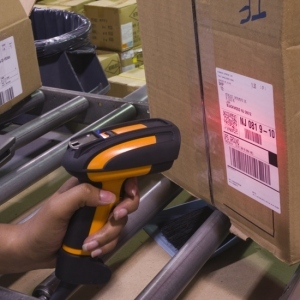High resolution lenses for machine vision — standard and custom lens design
CCD Barcode Scanner Technology Explained
High Resolution Lenses for machine vision, instrumentation, inspection and vibration-sensitive applications. Standard and custom hi-res lens assemblies.

image-barcode-scanning
Business owners, whether they carry and sell inventory, or whether they simply need to track office equipment need a way to monitor where it’s housed and barcode scanning technology is an efficient, accurate way to do just that. The application of a barcode to your items and then scanning it into a handheld scanner allows you to upload the information to your computer for ease of tracking.
Barcode scanning technology can be found in locations ranging from libraries to warehouses to grocery stores and even hospitals where they are used to track patient medications and even the location of the patient himself. Barcode scanners are separated into various types including CCD barcode scanners and laser barcode scanners.
CCD barcode scanners (charge coupled device) technology is also known as linear image barcode scanners/readers. With this technology, tiny light sensors are arranged, single file, within the CCD scanner. These lights measure the ambient light that the barcode emits (the dark versus the light in the code). These CCD barcode scanners are designed for harsh working conditions.
A laser barcode scanner uses laser beams to illuminate the barcode so it can be read. The laser shoots a beam of light back and forth across the barcode and the photodiode in the laser scanner interprets the code. These scanners offer accuracy and high precision in reading the code. These scanners can read barcodes from a greater distance than the CCD scanners are able to.
As with every type of technology, each scanner type has its own benefits and drawbacks. As a comparison, a CCD scanner utilizes LED lights to illuminate the barcode and these lights have a lifespan of almost 10 times longer than laser scanners. Laser scanners, because of their internal moving parts, are less resistant to wear and tear and are susceptible to failure or damage.
Laser beams can bring with them some inherent dangers if safety precautions are not adhered to as it relates to direct viewing; CCD barcode scanners don’t have this limitation. Also a CCD scanner is less expensive than a laser barcode scanner and they also have a higher, quicker scanning rate than laser scanners.
Conversely, there are some of the benefits that laser scanners have over CCD barcode scanners and they include the fact that laser scanners can read barcodes at longer ranges. A laser scanner can also read a barcode that is longer; CCD scanners can only read barcodes that are fewer than four inches long.
Both of these barcode-scanning types are efficient and help reduce human error in tracking of goods and equipment. The technology of affixing barcode stickers and downloading that information into computer program amps up efficiencies in the workplace.